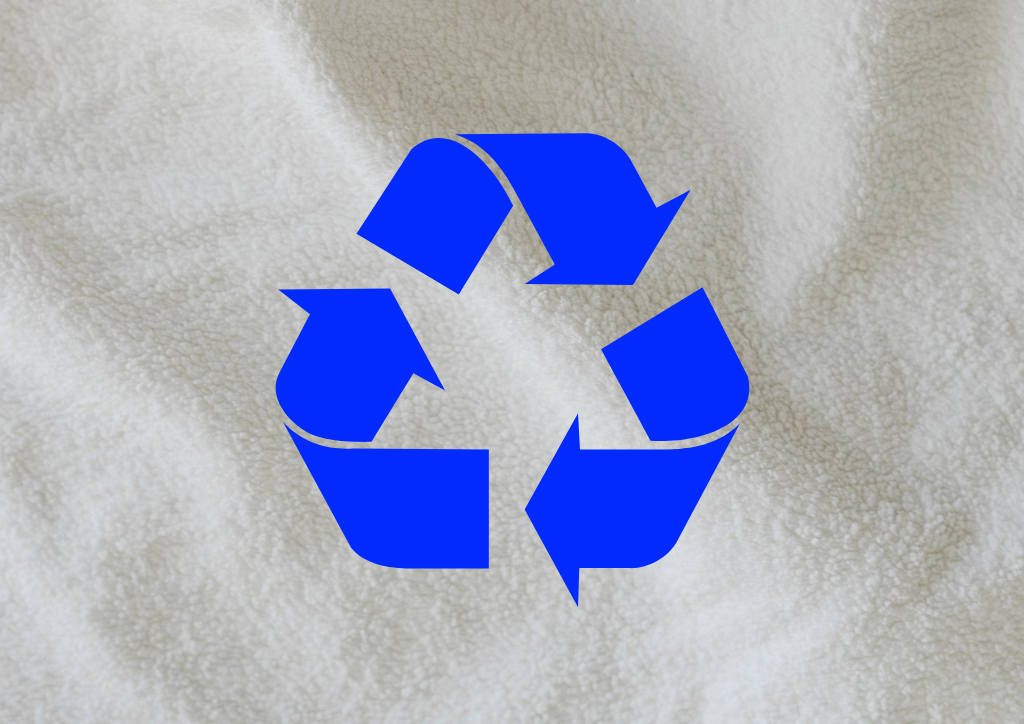Is Recycling a Solution To Fashion’s Waste Problem?
Recycling is often said to be key to circularity. Technology and investments are increasing, yet only 13% of all textiles are recycled. What are the steps needed to truly scale recycling?

Recycling is on the rise. More and more investments are being put into developing the necessary technology and infrastructure, and brands are increasingly incorporating recycled or recyclable materials into their textile predictions. From Adidas to Patagonia to H&M, recycled material use is being seen throughout the fashion industry as an answer to the growth of eco-conscious consumers. And that is good news for the eco-conscious consumer. Recycling is vital to reintegrate textile waste into the system. It allows us to reuse the already existing materials, keeping them out of landfills while replacing the need for making new materials. It’s one of the fundamentals of circularity, and circularity has never been more needed.
Out of the 13% of all clothes that are recycled, 12% are downcycled (e.g., a rug or insolation material), and only 1% is cycled back into new textile products. To have a chance to achieve circularity in the fashion industry, we need more recycling. As of today, a staggering 85% of all clothes end up in landfills, often in developing countries. Millions of tonnes of plastic clothing waste end up in nature, damaging the surrounding environment and the people living there. Fashion’s waste problem is massive; the whole industry needs to change to solve it.
According to a McKinsey & Company study, 18-26% of textiles could be recycled by 2030, reaching 70% once the industry fully matures. Today, that number is only 1%. Can these predictions be actualized? Let us take you through the current state of textile recycling, how it works, its challenges, and the steps needed to overcome them.
"Only 1% is made into new textile products"
Recycling For Overstock
Most would assume fashion waste originates from used clothing that consumers have disposed of. While this might be a majority, a big portion of textile waste comes from pre-consumer waste. That is, unsold clothes or excess deadstock fabrics that were never sold. Consequently, most recycling is for post-consumer waste. However, considering as much as 30% of clothes are never sold, recycling has the potential to be an effective solution to the problem of surplus stock. These are the benefits of overstock recycling:
- It can work as a way to liberate stock, reducing brands’ storage costs.
- Sustainable option for defective products that cannot be resold or donated
- Recycling is a way of reintegrating overstock into circular streams instead.
- It can also provide recyclers with sufficient feedstock required to develop the technology and scale up.
- Brand protection – it eliminates the problem of resale cannibalizing on sales
The Current Challenges of Textile Recycling
If recycling has such potential, why isn’t it more developed?
First, the process requires a great deal of labor, which is expensive. In order to recycle a textile, buttons, labels, and other non-fabric have to be removed to prepare it. Although technology such as automatic clothing sorting is on the rise, the de-trimming part remains a lengthy, manual, and expensive process.
Second, the materials used in clothing are often unsuitable for recycling. For example, mixed fibers, as well as certain materials, are highly difficult to separate. These clothes were never meant to be recycled in the first place. For recycling to be possible, the dyes must also be washed out.
This takes us to the third reason: the actual recycling process is complex and energy-heavy. Washing out the dye of a textile often requires high pressure, long processing times, toxic chemicals, and temperatures of up to 100 C° or more. Then, both chemical and mechanical recycling have challenges in scaling up. Chemical recycling becomes quite expensive, with many processes and chemicals needed to change the molecular structure of the fibers. During mechanical recycling, on the other hand, fibers (especially cotton) are often weakened and lose their strength and quality. They might therefore have to be mixed with virgin fibers to achieve good quality or used for downcycling. This makes the process less cost-effective.
The Future of Recycling
In order to reach the numbers that McKinsey & Company has predicted, certain steps need to be taken. This includes government policy changes, bigger investments, and developing technology. One very important legal change that is vital to boost recycling production is circular design legislation. Providing incentives to brands through, for example, EPR to use recyclable material, more mono-fibered textiles, and create higher quality products, in general, will be key to facilitating the process. At the same time, increased investments in technology capable of separating mixed fiber compositions are needed. Some companies are already developing such technology, but it still needs to be scaled. Another key step is to improve the necessary infrastructure. Collection, sorting, and de-trimming are still major challenges that need more investments. Last but not least, more investments from both the public and private sectors into recycling technology in order to make it as cost-effective as possible.
"The Industry is predicted to bring 8,000 jobs only in France by 2030."
Recycling still demands a high investment to indulge in for brands, but the future is bright. The industry is predicted to bring over 8,000 jobs only in France by 2030. More investment than ever is being put into recycling, and a growing number of textile-to-textile actors exist in Europe and worldwide. For example, a new technology that creates glucose from cotton, which is then made into new fibers, is being improved and developed around Europe. Moreover, the EU is currently looking into Extended Producer Responsibility which would require brands to financially support the recycling infrastructure to manage their products’ end-of-life. We have a long way to go, but it is possible.
FINDS sees recycling as one of the main components and possible routes for unsold clothes. Our solution automatically identifies which products are fit for recycling based on composition requirements, facilitating overstock management for brands and sourcing of materials for recyclers. Want to know more? Contact us.
“A tougher approach and lower tolerance towards the fashion industry”
If you’d like to learn
more about FINDS,
let’s chat.
You can contact us here with any questions.
+33 7 69 22 30 58















